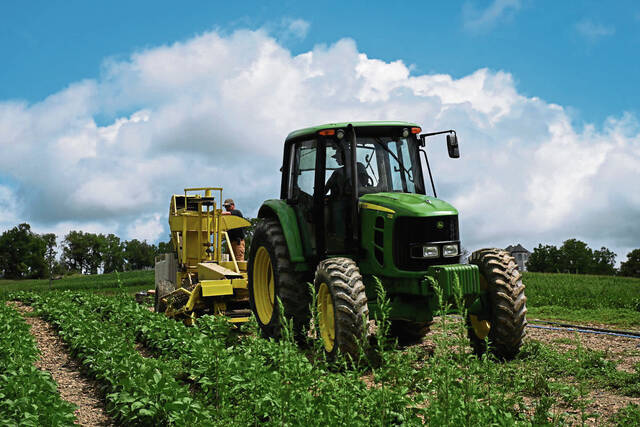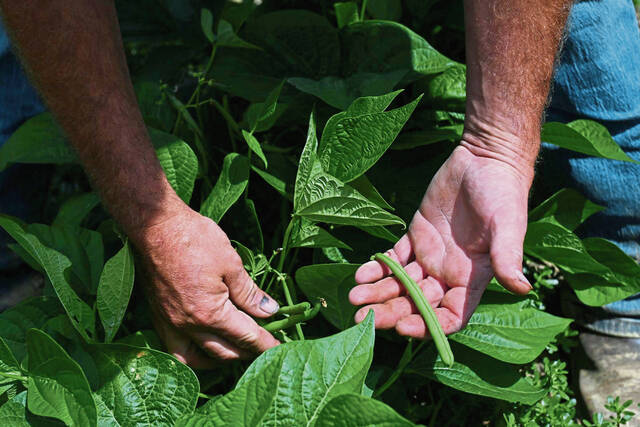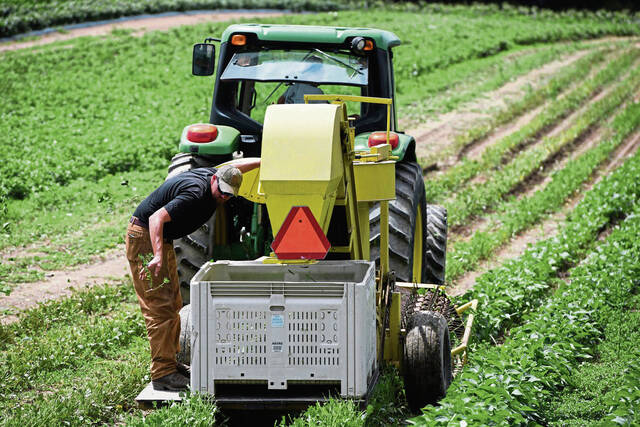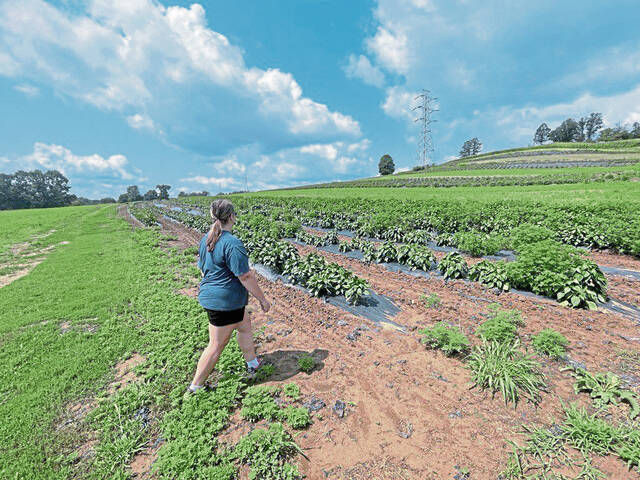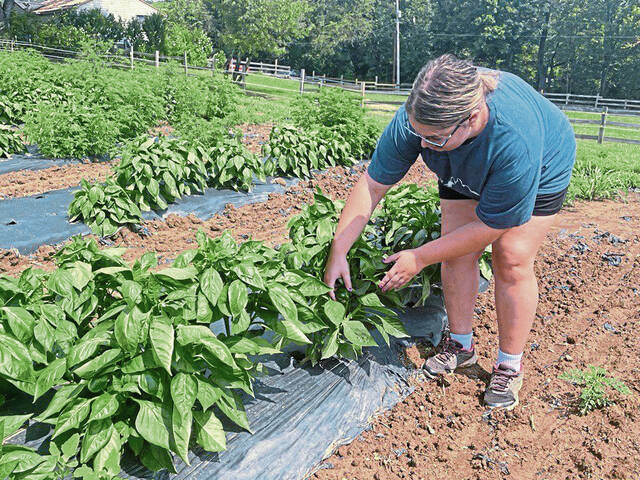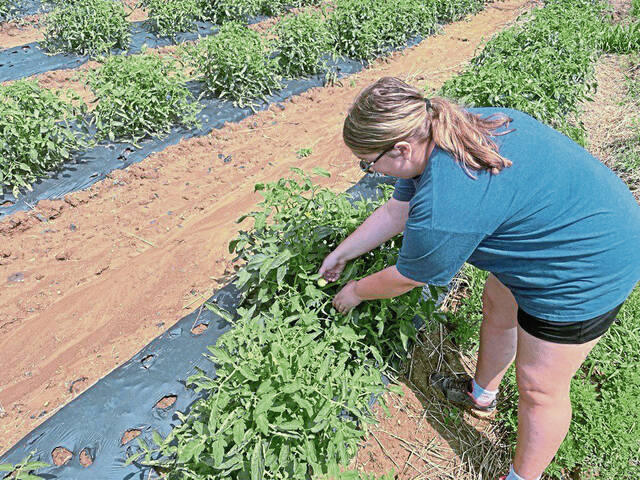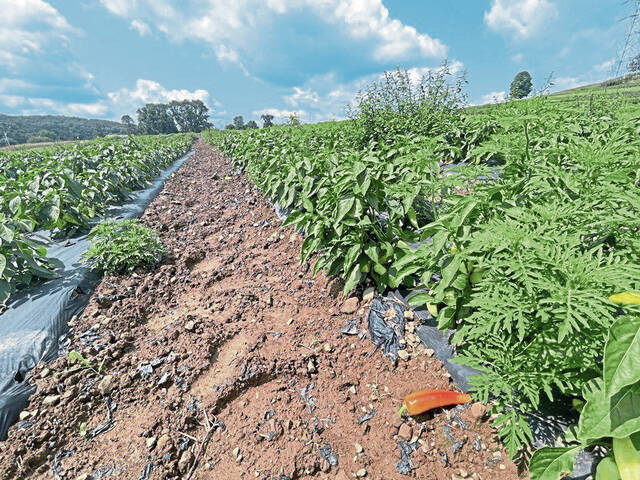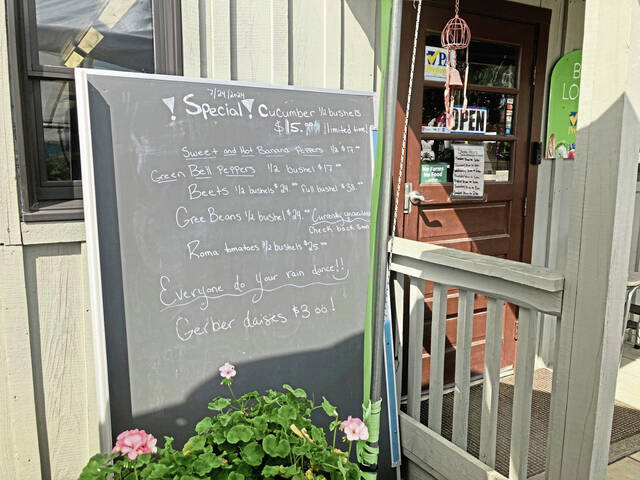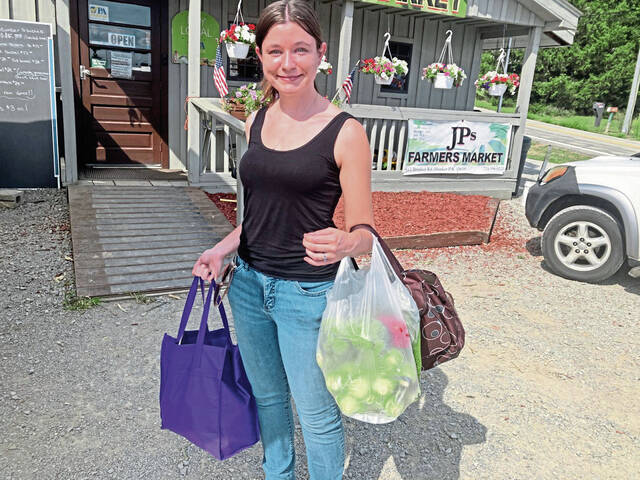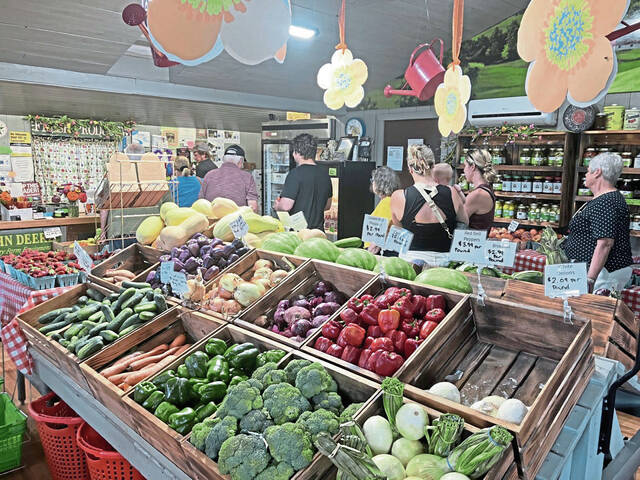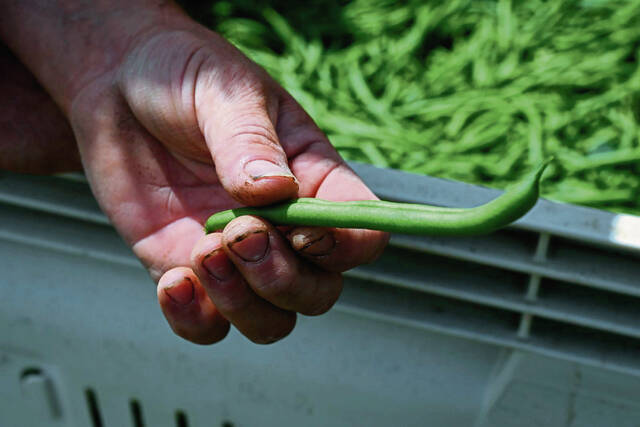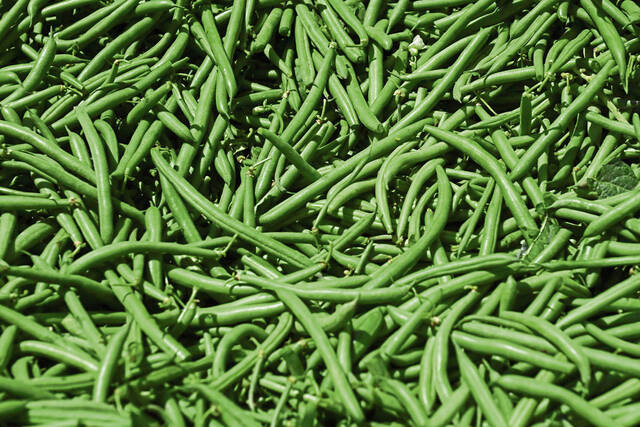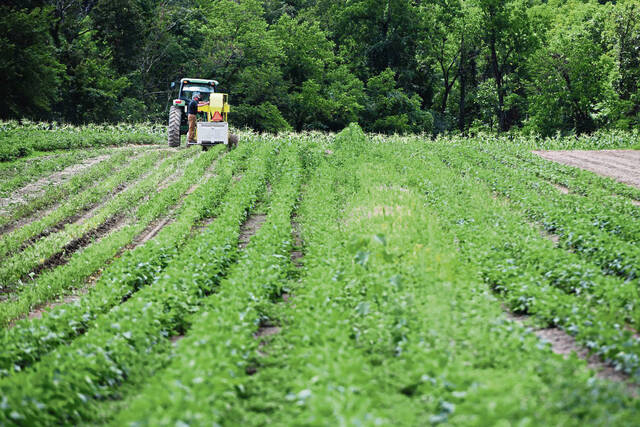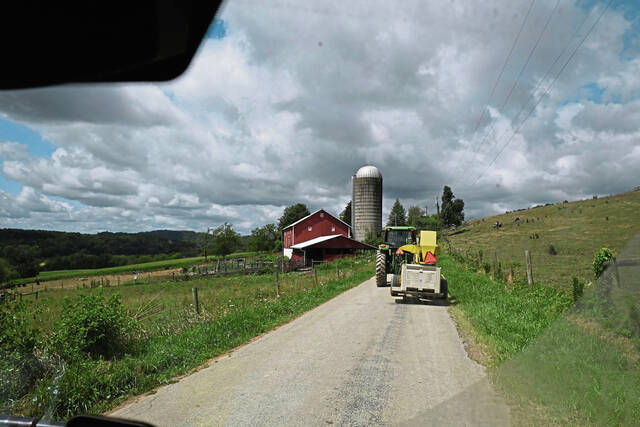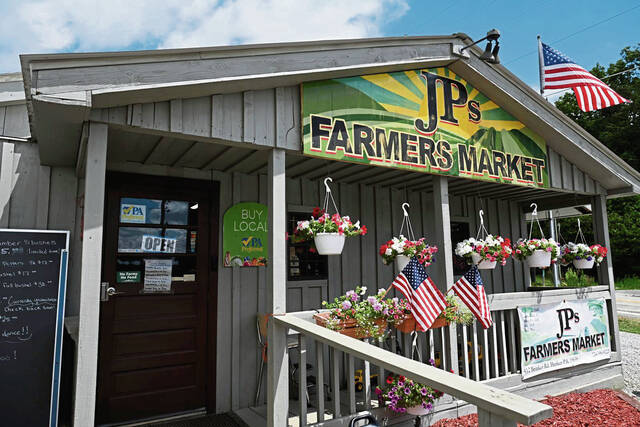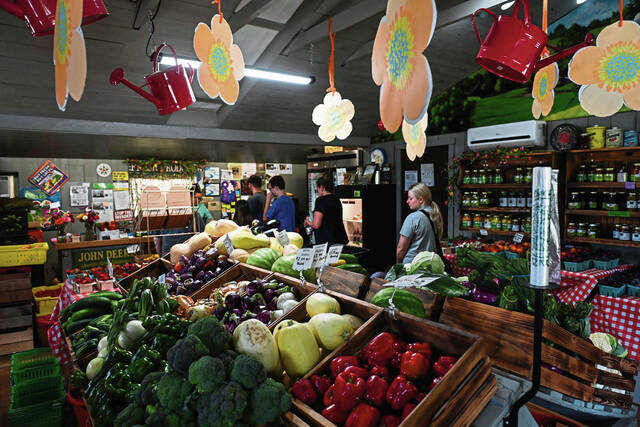Heat waves, dry spells have financial impacts yet to be seen by local farmers
A roller coaster summer of heat waves and dry spells is pausing business on some local farms, threatening their pocketbooks.
“We’re usually open at the end of July,” said Mikayla Long of Myers Pickle Farm in Gilpin, a well-known farm and store that’s been selling locally grown produce during summer months for decades. “It’s weird being August and we’re not open yet.”
“We had our cornfield ready, but the lack of rain killed it. Usually, any other year, we’re open by now.”
Long isn’t alone, as farmers throughout the region worry about a late harvest and how it will affect their sales with summer already entering its last month.
“Every farm in Westmoreland County is hurting,” said Joel Milowicki of Keenan Greenhill Farm in Hempfield and Mt. Pleasant townships and JP’s Farmers Market. “I don’t know what the financial impacts will be just yet.
“We’re middle of the road. We’re not where we were a year ago, but we’re not horrible.”
Palmer’s Farm in Unity has lost about a quarter of its crop this year because of the weather, farmer Neil Palmer said.
“It’s been very challenging,” he said. “It’s having a tremendous impact on us financially. And from a product standpoint, product is way down. Our sales revenue is going to be severely impacted by this. We have suffered a lot of loss.”
The situation has Long apologizing to customers. Her family’s stand has been a staple along Route 66 since 1925, offering corn, tomatoes, potatoes, peppers, pumpkins, squash and more, she said.
“We’re sorry, but it’s not ready yet,” Long said. “We can’t give what we don’t have.”
Once the corn is ready, the stand will open, she said. But only Mother Nature can set that timeline.
“People keep asking if we are open. They’re disappointed,” she said. “There’s nothing we can fix about the weather.”
The family is worried about how the weather will impact their finances, Long said. The farm is how they make a living.
Long hopes things will turn around, especially because fall is when the market is busiest.
Costly to water
There’s an obvious financial impact not being open will have at Myers Pickle Farm, Long said, but the impacts of that are yet to be seen. Watering the crops also has come at a cost, she said. The property is about 300 or more acres, she said.
For farms that can irrigate their crops, even that brings problems in addition to paying for water.
“The drier it gets, the more animal damage you have,” Milowicki said. “They’re looking for moisture, too.”
Palmer’s situation would be much worse if he did not have irrigation on his vegetable farm. He estimated using about 1 million gallons of water on his 20 acres of crops this summer.
Some plants, like tomatoes, don’t require much water so they have been able to survive. Others, like sweet corn, take up a lot of space and need “exponentially greater amounts of water,” leading to more crop loss.
“We have a lot of disappointed customers,” Palmer said.
A 500,000-gallon pond built last year at Sacred Gate Farm in Kiski was a saving grace, said co-owner Lorraine Krezolek. Her 20-acre farm has about 2,800 berry bushes.
The self-pick berry farm closed for the season July 27, Krezolek said, because of the heat waves and dry spells speeding up blueberry production by about two weeks, she said.
“The dry spells helped ripen up blueberries faster,” Krezolek said. “They were about two weeks ahead.”
The farm didn’t see a reduction in crops from the weather, but fewer people visited to pick berries because of the heat, Krezolek said. That caused a slight financial impact.
“People did not want to pick because of the heat,” she said. “The berries were fine because of the pond.”
Heat not the only challenge
Bob Pollock, an educator with the Penn State Extension, said that, while the weather is a challenge for farmers every year, this year has been more difficult.
The summer started out wet, so farmers had the opportunity to get a lot of plantings in, Pollock said. But then things dried up — and got hot.
Western Pennsylvania’s hills and valleys “add another piece to the puzzle,” Pollock said. It’s easier to work the soil on a hilltop with wet weather, but hilltops dry out faster, he said.
“This year, we’ve just had a large stretch of dry weather,” Pollock said. “This year seems to be different in that we’re having drier weather for a longer period of time, coupled with the 80- and 90-degree temperatures over many days.”
The economy also has added another challenge to farmers, Pollock said. Inflation has increased the cost of materials. If a consumer doesn’t have enough disposable income, farmers face selling items at their worth. And it’s difficult for farmers to hold on to produce that has a short shelf life, he said.
“You have to make adjustments and do the best you can,” Pollock said.
Typically, drier weather produces better-quality crops, but there might not be as much yield, he said. Wetter weather often can attract more pest issues with plants.
“But if plants aren’t getting enough water, the plants might not be as big,” he said. “Most farmers are doing the best they can and working day and night to produce as large a produce for people to eat.”
The Myers family also owns livestock, cattle and pigs on the property. Long cares for two horses.
“Our pastures are dead,” she said. “I’m feeding horses extra hay than what I normally do.”
Rain on Tuesday helped the cause, Long said.
“We need more rain, desperately,” she said.
Long said whatever the farm is able to grow often gets eaten by deer.
Palmer said the wildlife damage at his farm has been “unprecedented.” Animals, including deer, have gone to town on his cucumbers, and he’s hardly been able to put out any for sale.
“The wildlife pressure is the greatest that I’ve ever seen,” he said. “Without a doubt, I attribute that to the extreme weather of June and July. We’re irrigating, we’ve got this succulent crop growing, and I’m assuming they’re happy to find something green and succulent.”
‘It’s been a strange summer’
Milowicki said his 200-acre farm does a lot of irrigating to maintain its crops. His farm had to recuperate this year when it was hit hard by a hail storm. The hotter temperatures and drier weather emphasize his need to irrigate.
“(The weather’s) pushed some crops ahead and some crops behind. Those who have water are doing quite well. Those that don’t, aren’t. It’s been a strange summer,” he said.
A rainfall Tuesday wasn’t enough to fix everything, he said.
Typically, Milowicki’s farm grows excess vegetables, which it sells to grocery stores. He has not been able to do that this year. He also is unable to put out as much produce this year as in previous years at JP’s Farmers Market.
Standing behind the cash register, Milowicki fielded questions from customers who wanted to know the condition of some of the vegetables and when he would be harvesting more.
Those shopping at his market along Route 819, south of Armbrust, conceded that local produce is still better than what’s offered in grocery stores.
“It’s great quality here. It’s the best stuff,” said Heather Thomas of Ruffs Dale, carrying two large bags of produce, including corn, potatoes, broccoli, peppers, lettuce and peas.
“It’s not all coated in wax” like at some grocery stores, Thomas said. “It’s delicious.”
Melinda Roberts of Mt. Pleasant, buying sweet corn and strawberries Thursday, figured the produce for sale is what survived the hot summer.
“It’s nicer,” said Roberts, who grew up on a farm. “It’s nicer if we had a little more rain.”
Like Long, Milowicki is hoping for a strong fall season. He said his pumpkins are growing well so far.
“I think we will be strong for the fall,” he said.
Palmer said that, while this year has been “really disheartening” for farmers, he keeps the faith there will be another summer for his business.
“You spend your whole year preparing and hoping and expecting the results you’re working toward,” he said. “The best I can say is, well, next year I hope is better.”
Remove the ads from your TribLIVE reading experience but still support the journalists who create the content with TribLIVE Ad-Free.

